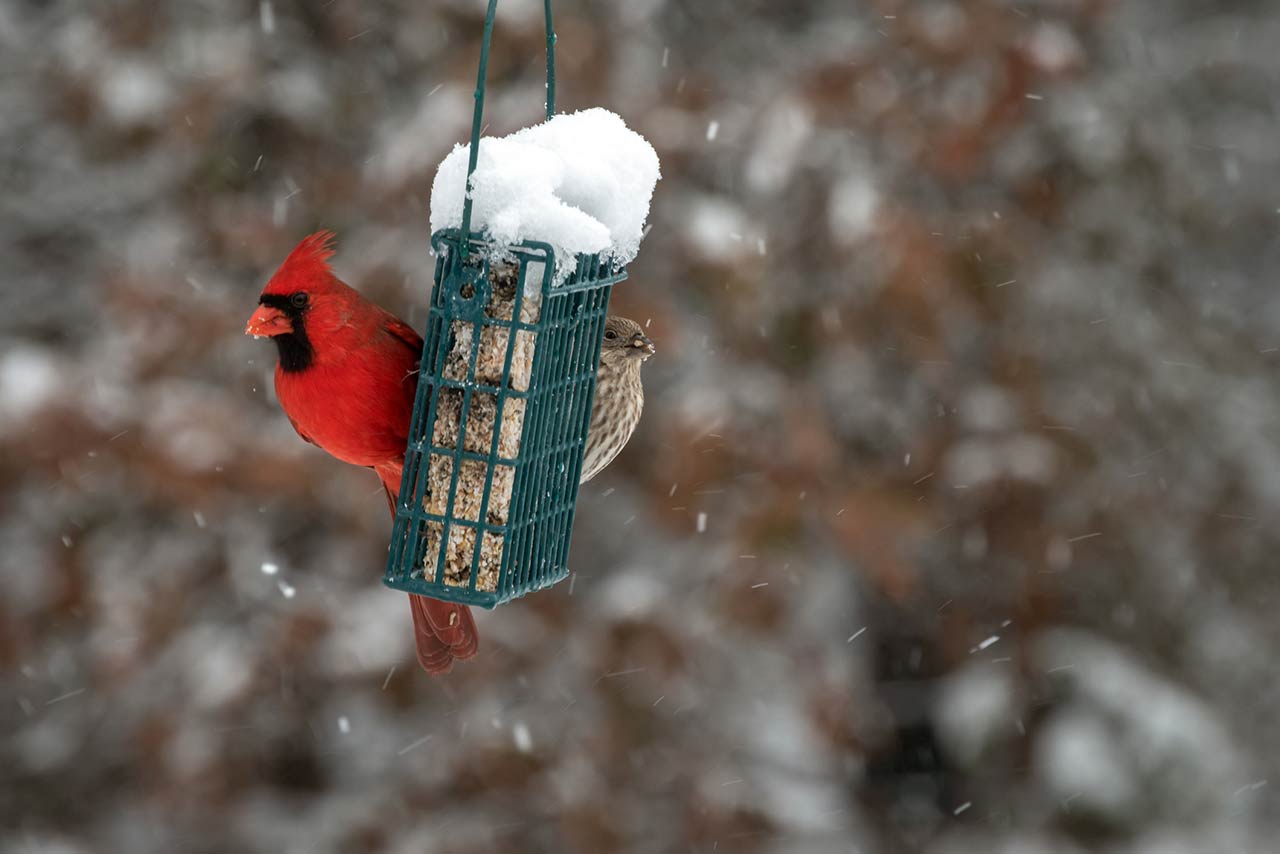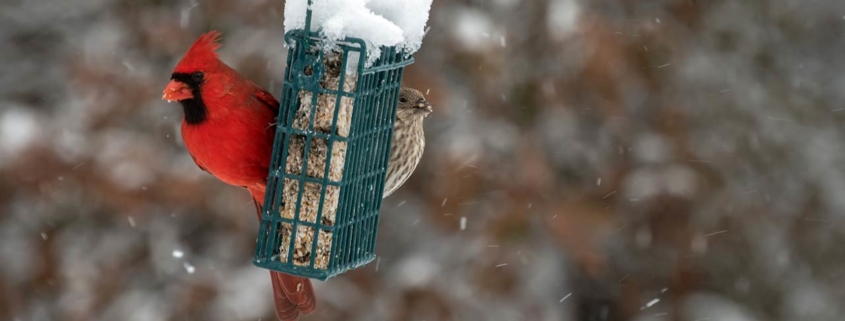Chicago Home and Lifestyles – Feeding Backyard Birds in Winter

Many people stop feeding birds in winter. Whether they find it too hard or simply think the birds leave, winter is the most important time to feed. Cold weather climes will find many of the birds’ natural food supplies buried in snow. So, the birds you feed in summer will overwinter if they have sufficient food. You will even see birds you do not see in summer if you are providing the right food.
Blue Jays, woodpeckers, cardinals, sparrows, and finches are just a few species you find at the winter bird feeders. Doves like Mourning and Turtle will practically live in your backyard if you provide ground food. You will need a ground feeder for these doves or just toss food on the ground. We keep an 8-foot round circle clear of snow within reach of the back porch to toss food daily. We feed early morning and evening. Cardinals are here before sunup!
Do use larger feeders in the winter and keep them relatively close to the house for ease of filling. We have an open back porch with a roof, so our main feeders are under shelter. For those in the open, purchase a good-sized feeder with a roof that extends to keep the seed as dry as possible. This will feed the perching birds. Wet seed can mold and cause disease.
Clean out any wet or frozen seed regularly. Be sure to clean feeders monthly with a mild unscented dish soap solution. Rinse, then sanitize with a bleach solution of one part bleach to nine parts hot water, and then dry thoroughly before refilling. Do put feeders out in the most severe winds. It is good to have shelter close by like hedges, bushes, or brush piles for birds to offer safety from predators. If you have feeders close to the house, keep at least five feet from windows and use decorative clings so birds will not fly into them.
Do not cheap out on seed! This is true all year long. Cheap seed is made with half fillers that birds reject, so they accumulate in the feeders and get wet and moldy. Birds need high-fat seed for energy in the winter. Black oil sunflower, safflower, and white millet provide a good mix for most birds that winter over. Add some raw peanut hearts for many birds. We feed in-shell peanuts to keep the squirrels at bay. We were delighted to see that Blue Jays love the peanuts and take them into the trees to shell and eat. You can use a mix entirely made up of hulled seeds, so you minimize the mess of hulls after the winter, but it is expensive. We have been offering suet with fruit and seeds this year. The woodpeckers are particularly fond of this, but all the birds like it. Again, it is high fat for maximum energy.
Keep up birdhouses and shelters year-round to provide roosting sites. Add a weatherproof heater to your birdbath, or buy an already heated one. We have our birdbath next to the garage to provide electricity for the heater and bushes on either side for shelter. They should be several feet away to provide shelter but not provide ambush cover for predators. We keep the seed in the house as keeping it in the garage or a shed invites rodents, and it is more difficult to keep dry.
So, do feed the birds this winter. It is a little more work but well worth it. The birds will brighten up the entire backyard with their visits and songs. They do help to get you through the darkest days of winter.
KATHLEEN WEAVER-ZECH AND DEAN’S TEAM CHICAGO

